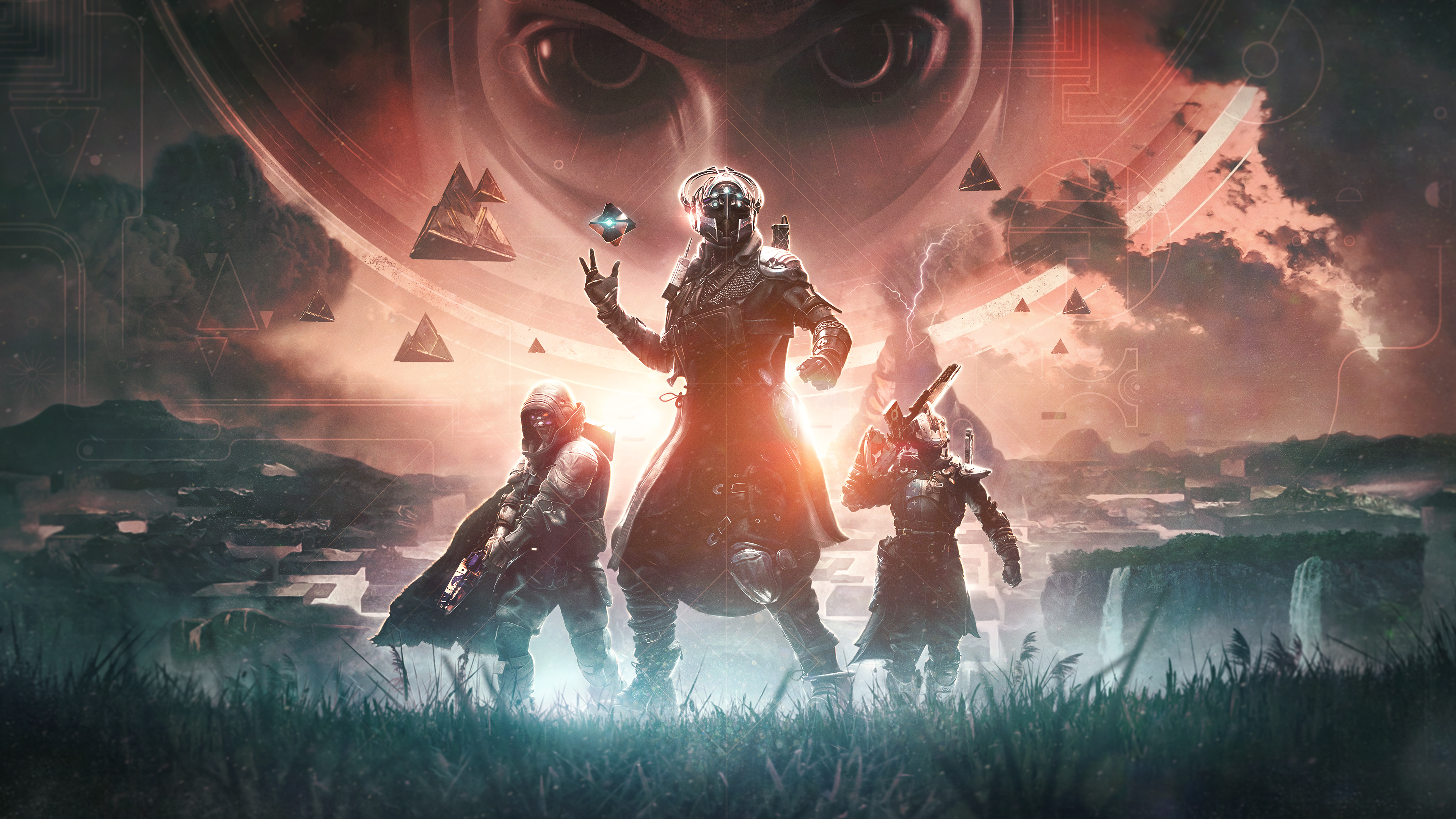
Destiny 2: The Final Shape is the culmination of 10 years of art, game design and an ambitious vision to create a universe rich in lore, action and epic, draw-dropping vistas. This multiplayer shooter from Bungie – the same video game studio that created Xbox’s original killer app, Halo – is one of the best free games to play right now, so anyone can step into the role of Guardian and start blasting on PlayStation 5, Xbox Series X/S, and PC.
Destiny 2’s depiction of space is less of the unyielding void of hard sci-fi and more of an abstract, weird and wonderful backdrop. It’s a science fantasy universe that keeps you coming back, and will eventually pique your interest in its paid expansions. These include the evocatively titled and critically acclaimed The Witch Queen in 2022, and more recently 2023’s Lightfall. Both are chapters in the overarching Light and Darkness Saga, with the closing verse, The Final Shape, just released.
To create one video game world, let alone a starry sky full of planets, takes a village, so we caught up with artists across Bungie to discover how this team has crafted one of gaming's most visceral, iconic universes, and how all of that skill and passion is being poured into making The Final Shape a celebration of a series many have grown up playing.
In our exclusive chat with the crucial art departments at Bungie working on Destiny 2: The Final Shape we uncover this team's unique approach to creating its universe and how it designs enemies, weapons and environments.
Designing Destiny 2: The Final Shape

Rusty Durbin has seen the long arc of this science fantasy epic. At Bungie for the last 11 years, he first contributed to 2014’s Destiny and now leads the world art and palette teams on Destiny 2.
He begins, “Creating environments for The Final Shape was a really amazing creative challenge that was unique to this release - and we did a handful of things different than we ordinarily do.”
Fresh expansions usually introduce a new planet - a fresh destination for the story to orbit - but The Final Shape departs from this structure in favour of a more linear “hero’s journey”. Even when developers aren’t breaking the mould though, building environments for players to move through and interact with presents plenty of challenges to navigate.

“I think balance comes to mind as one of the more poetic challenges the world art team had to tackle all through this release,” Durbin says, “We naturally need to balance the frame from a composition perspective, but also from a navigational composition perspective [that will help to guide] players through spaces. [...] But also, we're trying to really tell a lot of narrative- story in these environments. And so there's a lot [to] balance when it comes to how much information [we’re] trying to show on screen to the player at once.”
One vista Durbin’s team has been working on is permeated by purple, depicting massive structures colliding towards a shining vanishing point. “This one was a particularly interesting challenge.” Durbin smiles.

He describes this purple point as the “crossing the threshold sort of moment, the point of no return,” early on in The Final Shape. He likens it to Dorothy’s trip up the tornado before crash landing in Oz, with memories of the people she’s leaving behind swirling past the windows of her buffeted farmhouse.
He elaborates, “We wanted to create an environment that portrayed familiar elements and locations from across Destiny. So in here, you'll see the human colony ships, you'll see pyramid ships, European Dead Zone environments, there's sections of the Kings Fall raid.”
All of these landmarks represent the Guardians’ memories, accompanying the player on this new, strange journey - call it a full circle moment. It’s hard not to hear something that echoes like a metaphor for the creative process when Durbin elaborates, “[We’re trying] to convey the sense that these memories are like, intentionally being extracted, sliced, catalogued, and [...] that sense of ‘how are these things going to come together on the other side?’”
Creating enemies for Destiny 2: The Final Shape

Unlike Dorothy, Guardians can’t simply dump cold water on their enemies. It’s a big, bad galaxy out there and bringing it to life requires an ongoing conversation across creative departments at Bungie. Eric Elton, the 3D character lead on the bosses and combatants team, explains how an ongoing inter-departmental conversation throughout concepting and beyond is essential to the creative process at Bungie.
Elton walks us through the creative process behind the Grim, an in-game enemy, describing the initial idea behind the combatant as “Hey, we want it to be a flying creature.” Elton’s team began by roughly blocking out a model in Maya that could then be quickly implemented in an early build.
“Purposefully very simple and blocky, because we're at the stage where we're just getting the first pass of it; we just want to get something in the game, so that we can react to it.” Elton explains. He later goes on to add, “Gameplay is super important. So we'll always prioritise that - not at the expense of art, but making sure that the gameplay feels right [is key]. And then the art can fill in the rest of that story.”
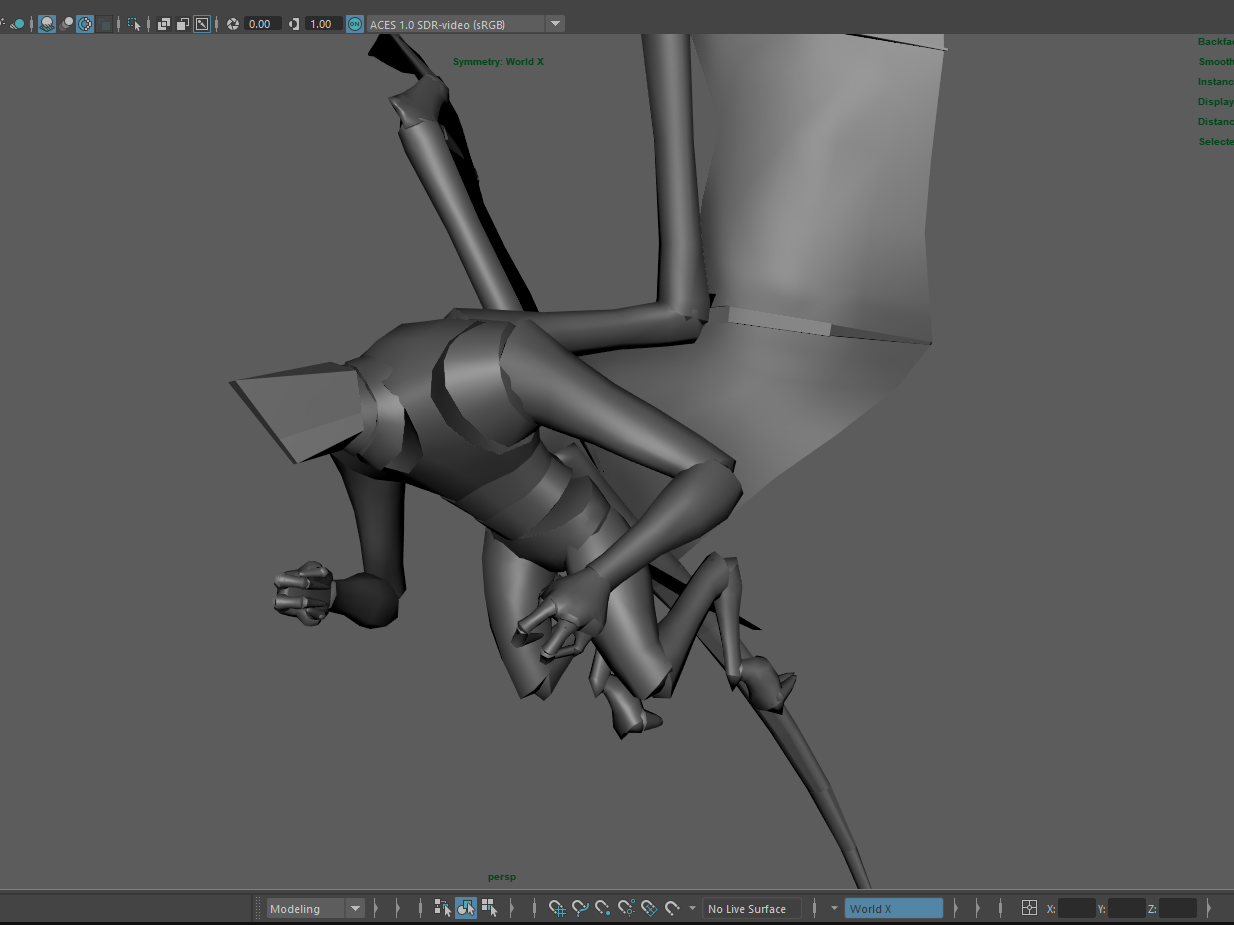

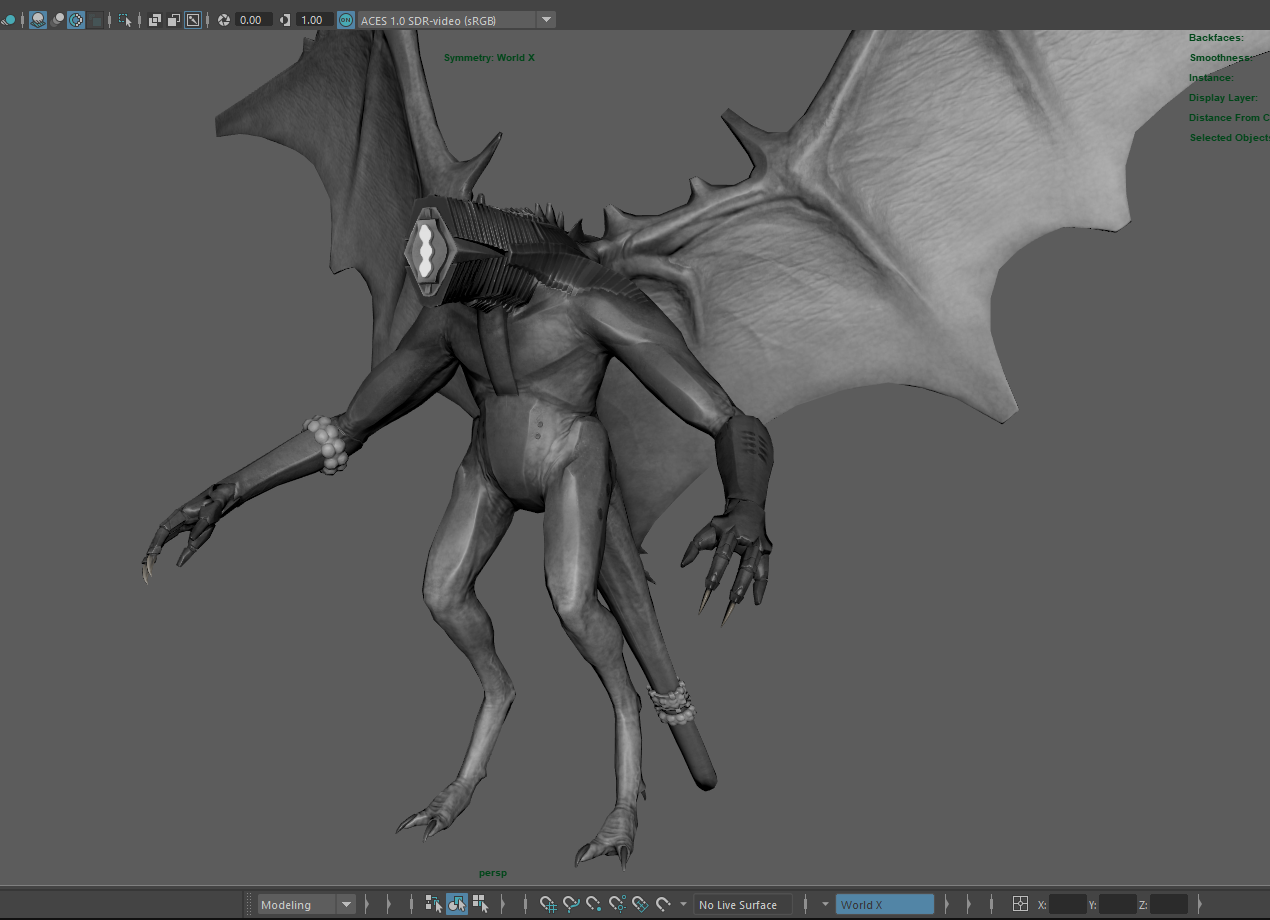
While riggers and animators tinker with these early sculpts, the concept team will further flesh out the design. While the Grim is obviously inspired by the natural world, with bat-like wings and powerful limbs reminiscent of a primate, it’s also a creature that has been warped by Destiny 2’s big bad The Witness.
More naturalistic design elements reduced to simplistic, sculptural shapes represent that influence, alongside shape language associated with a previous raid boss and disciple of the Witness, Rhulk.

Elton moves on to highlight concept work by Bungie artist Jacob Gonzalez that demonstrates the Grim’s shriek attack.
“[He] did an awesome job, [taking] this really different kind of approach to a screech, [and] an animal that can open its mouth. [It’s] sort of this weird kind of Pyramidean, Witness-looking shape that can screech in a way that's unexpected and exciting,” Elton enthuses, “So once we saw this, we were really excited [...] we went back to the rigging team and said, ‘Hey, can we change it so that we can open it this way where it’s this triple layer kind of mouth thing?’ And so there's always this iteration, there's always this give and take with the process of ‘Hey, we've got this other idea. Can we do this?’ ‘Yeah, let's try it out. Let's get it in game, let's see how this feels.’”
Elton goes on to conclude, “The concept evolves as we work back and forth together, which makes it really fun.”
Concept art for Destiny 2: The Final Shape

So during this ongoing multi-discipline conversation, how does Bungie ensure they don’t lose the thread?
Gabriel Garza, the lead concept artist for Destiny 2, tells us, “Our job in the concept team is to put those ideas [gathered from across the development team] in visual form.”
Opening Clip Studio Paint, his software of choice for many years, he demonstrates some of his recent work. “In this example, I did a sketch here in the middle of what could be the unit, the Husk, and the things that I wanted to telegraph on the design,” Garza begins.
The Husk is a melee unit, suited to close quarters combat as highlighted by its bright red tonfa-style weapons. Garza explains, “[The bright red blades] could end up in the game, it could not. But at this point in the process, I want my teammates’ eyes to go to a specific place.”

The second idea Garza has sketched out is the Husk’s resistance to head shots, indicated in the concept art by heavy armour-plating around bonce, neck, and shoulder area. This armour design borrows from “Pyramidean” shape language already established by earlier expansions, and these visual cues clue players into exactly which side this creature is on.
The Husk is designed to get in the player’s face, so how do you fight it? Presented in the concept art are two options and gameplay outcomes. Players can either target the Husk’s weak point in the belly of the beast, causing the armour to erupt into a mass of roots reminiscent of the defeated silhouette of a boss from an earlier expansion, Calus. Or players can destroy that hefty armour, freeing a pilot creature known as a Geist that then gives chase.
Crafting Destiny 2: The Final Shape's weaponry
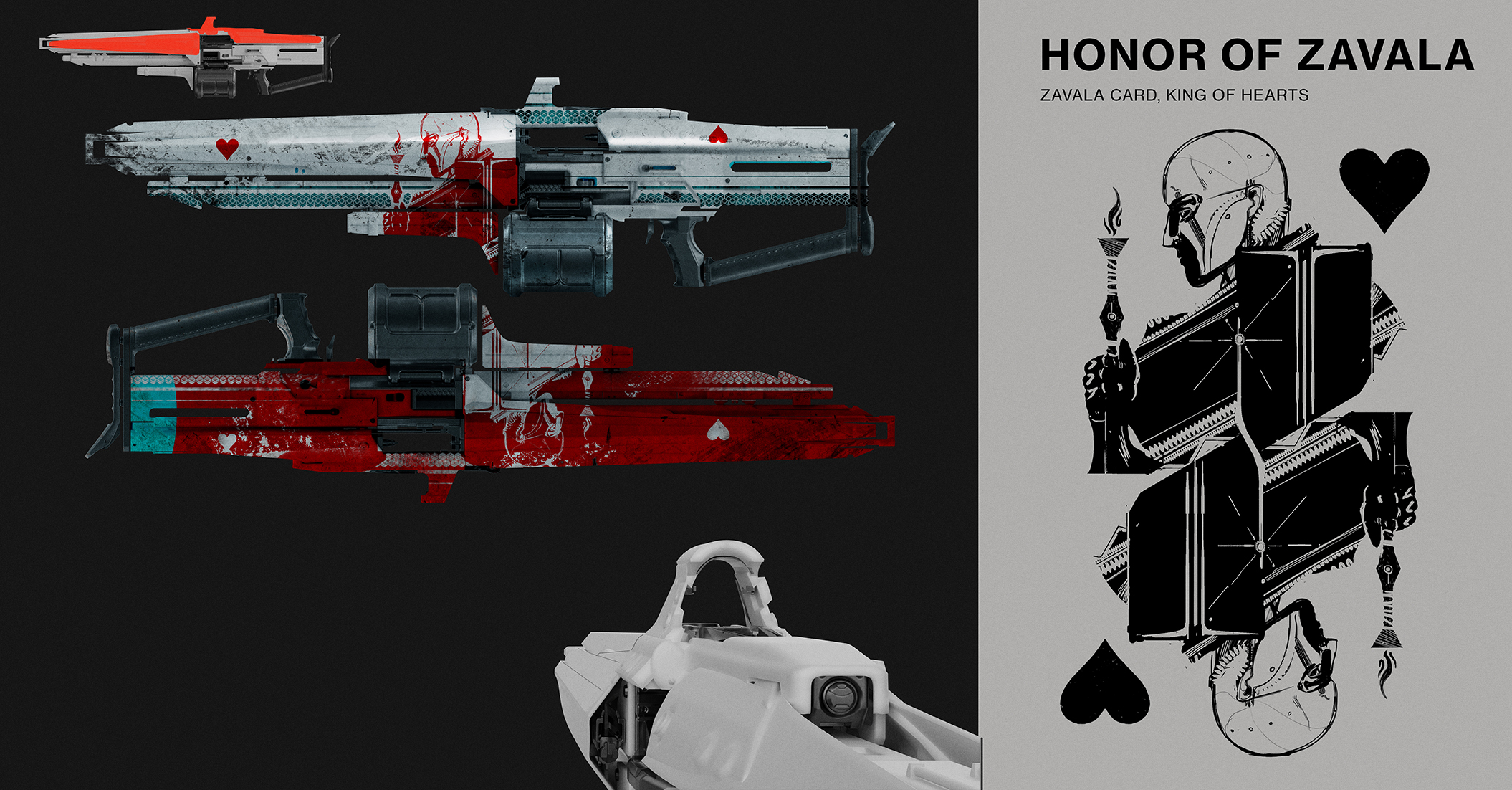
In a universe of Husks, Grims, and worse, players have to constantly up their arsenal. Destiny is known for its striking weaponry, from high-powered guns to tricked out blades. Much of this armoury falls under the domain of Michael Climer, the lead on the 15-person hard surface art team.
He tells us, “We get to work on something unique every season, which is super cool. We have a fixed number of weapon archetypes but it never feels like you're doing the same thing over and over again.”
He shares the result of another multi-disciplinary pitch meeting, showing a number of weapon concepts themed around playing card suits. Among these concepts is a firearm with a subtle heart motif called the ‘Honor of Zavala,’ in reference to Commander Zavala, the fan-favourite character played by late actor Lance Reddick.
He says, “Once we have the concept, [...] we'll go ahead and start working through the same process that Eric [Elton] talked about where we'll block it out, and we'll come up with sort of a rough prototype that we can verify works in game and is not too big, it's not too small.”


Climer’s team uses a variety of 3D software packages, including the usual suspects Maya and ZBrush, but also notes, “Blender has become a really popular one over the last couple of years.”
He adds, “Each person can kind of pick and choose whatever software that they want, that works best for their workflow. So we're not super prescriptive [about what our artists should use].”
Returning to the aforementioned concepts, he shares, “We do a lot of tie in with narrative and story [...] The backstory of this is [Cayde-6’s] Ace of Spades hand cannon [...] This [set of weapons] is very much a direct tie into that, of ‘what if there was also another stash of weapons that he had?’ This was just his favourites.”
Climer also tells us, “We'll work with environment, we’ll work with story and narrative, we’ll work with art direction and concept, and sort of build this bigger picture than just ‘this is a really cool looking gun, and the player wants to chase after it.’”
Collaboration is the secret sauce at Bungie
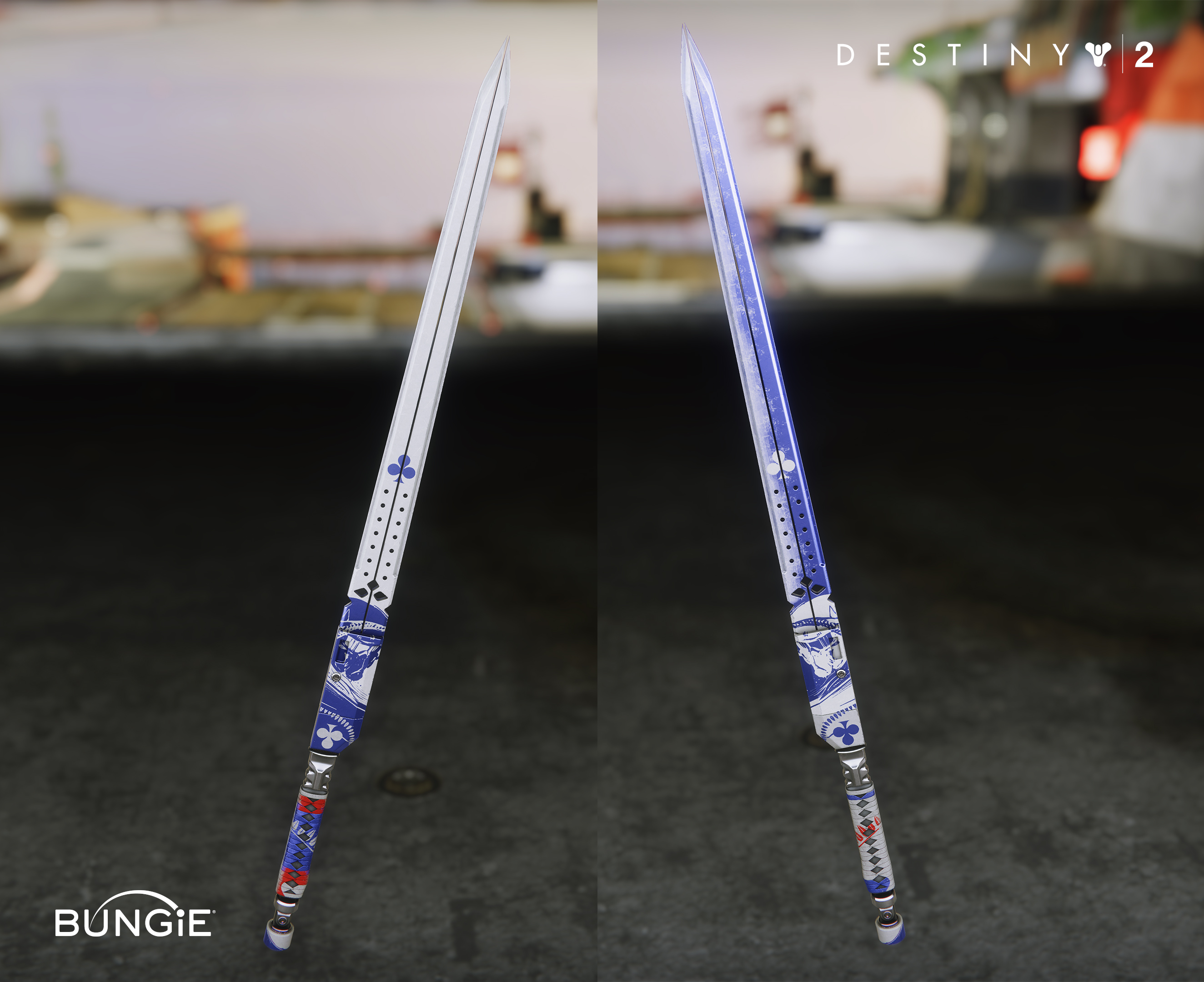
It’s no surprise then that when we ask Michael Climer for advice on working in the industry, he highlights the ability to collaborate as the most desired skill.
“Over time [...] you'll get better at the craft, you just have to be persistent about it. But one of the big things that I look for, especially with people wanting to join the industry, is how well do you work with others?” he begins, later adding, “None of us work in a vacuum. So it's all about how well you can collaborate and communicate and receive feedback and provide feedback.”
To hammer home the importance of this, Rusty Durbin quips, “Giving and receiving feedback was going to be mine. I should have spoken up first.”
Along similar lines, Eric Elton says, “Learn from the people around you. I've been here at the studio for a while but I'm still constantly amazed at the talent that comes in and that I get to learn from. [...] always be open to those other influences, [and to learning from other people.]”
Gabriel Garza builds on this point, “What I tell [my] students [...] is to use their life experience, to reflect that in their art. Technique, all these things you learn with time [and by collaborating with] your co-workers, like, all this [is important too], but what you bring from what you experience through your day by day [...] I think that's invaluable.”
There are no small roles at Bungie. Whether it's Hunters, Warlocks, and Titans coming together to blast their way through the latest in-game raid, or concept artists, modellers, and animators combining their creative powers to craft a really cool gun, Destiny 2 is a universe all about collaboration.
Inspired by the Bungie art team? Then read our guides to the best laptops for drawing, the best drawing tablets and our list of crucial Blender art tutorials and start creating.







